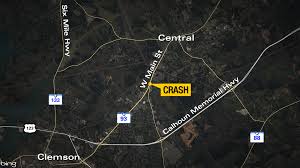CENTRAL, S.C. — A sorrowful afternoon in Pickens County turned tragic on Monday when a motorcycle collided with a Clemson Area Transit (CATbus), resulting in the death of the rider. The incident, which occurred around 4:20 p.m. at the intersection of West Main Street and Vickery Drive in Central, has left local residents and the transit community in shock.
What We Know
Authorities say the rider, 26-year-old Jacob Babayan of Greer, was wearing a helmet at the time of impact but was pronounced dead at the scene. The Pickens County Coroner’s Office is scheduled to perform an autopsy, while Central Police continue the investigation into the collision.
Deputy Coroner Marsha Alexander responded to the scene and confirmed fatality. As of now, officials have not disclosed further details about speed, road conditions, or fault.
Why It Matters Locally
Clemson’s CATbus system plays a crucial role in daily commuting for students, faculty, and local residents. Collisions between public transit vehicles and smaller, more vulnerable road users often raise pressing safety questions about traffic design, visibility, and bus scheduling in mixed-traffic areas.
Motorcycles already face elevated risks on roadways due to size, maneuverability, and exposure. When shared roadways host large transit vehicles, the potential for conflict increases—particularly at intersections. Experts often point out that safe intersection design, clear sight lines, and dedicated turning lanes are key mitigations.
Community Reaction & Concerns
While official statements are limited, community members and transit users are understandably uneasy. One local resident posted in a regional Facebook traffic group, “That stretch has always felt tight—cars and buses move fast. What’s going to prevent another tragedy?” (paraphrased). Some transit riders expressed concern over bus driver training and visibility during peak hours.
The public reaction underscores growing calls for enhanced safety measures in Central and surrounding areas—such as improved signage, intersections with better lighting or signal timing, and periodic safety audits of transit routes.
What Comes Next
Investigators will focus on evidence from the scene—brake marks, vehicle telemetry, road geometry—and the autopsy report may shed light on speed or contributing health factors. Once authorities release findings, community leaders and the CATbus authority may face pressure to revisit safety protocols or infrastructure design.
In the wake of this tragedy, the loss of a life—especially a young adult—reminds us all of the fragility of sharing our roads. As the investigation progresses, residents and officials alike will be watching closely for answers and solutions.






